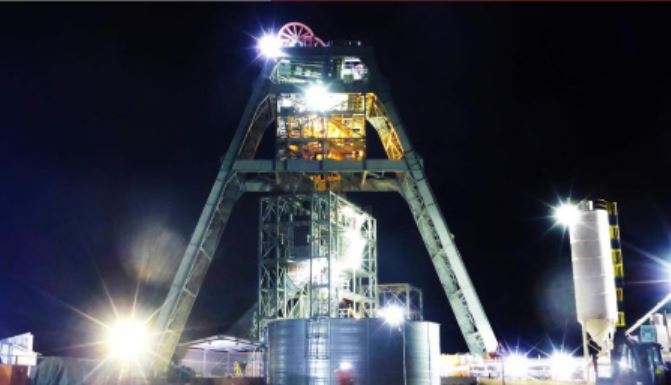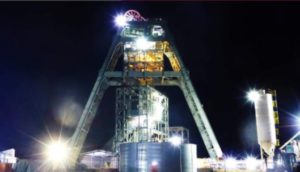International miners seek revisions to punitive DRC code

Shaft 1 head gear for the Platreef Project, South Africa. Source: Ivanhoe Mines Ltd.

Ivanhoe Mines Ltd. [IVN-TSX; IVPAF-OTC] on Thursday March 29 said a formal proposal outlining recommended changes to the 2018 national mining code has been submitted to the Democratic Republic of Congo’s Minister of Mines by a group of international mining companies that includes Ivanhoe.
The announcement follows recent revisions to a DRC mining code that are expected to impact every mining project in the African country.
On March 9, 2018, DRC President Joseph Kabila signed into law a new mining code that raises royalties and taxes on mining operations, while removing a stability clause in the current law that has been protecting miners from changes to the fiscal and customs regime for 10 years.
The group of international mining companies with operations in the DRC are now collectively negotiating with the DRC government in a bid to resolve corporate concerns about anticipated impacts on their DRC operations.
The group includes Randgold Resources Ltd. [GOLD-NASDAQ, LSE], AngloGold Ashanti Ltd. [AU-NYSE; AGG-ASX; ANG-JSE], Glencore PLC [GLEN-LSE; GLN-Jo’burg; GLNCY-OTC], Ivanhoe Mines, Gold Mountain International/Zijin Mining Group, MMG (PTY) Ltd. and China Molybdenum Co. Ltd.
A joint statement issued today by the group of international mining companies on Thursday said their proposed changes would address the DRC government’s expectations of increased public revenues from the mining of mineral resources and address concerns within the industry about the impacts of some provisions in the new mining code.
This week’s submission to the Mines Ministry by the companies, in part proposes linking a sliding scale of royalty rates to the prices of key DRC mineral commodities, which the companies believe would be a more effective mechanism than the windfall tax introduced in the new code and, at current prices, would provide the government immediately with a larger share of revenues than it would receive under the new code.
The submission by the companies also addresses stability arrangements, state guarantees and mining conventions.
The international companies have stated that they accept 76% of the articles in the 2018 code and are proposing changes to the remainder only to ensure the effectiveness and legality of the code.
“Ivanhoe encourages caution in reviewing reports and statements made before these discussions are concluded and mining regulations are brought into effect,” said Ivanhoe Executive Chairman Robert Friedland.
Ivanhoe Mines is advancing its three principal projects in Southern Africa, including:
- Mine development at the Platreef platinum-palladium-gold-nickel copper discovery on the Northern Limb of South Africa’s Bushveld Complex.
- Mine development and exploration at the Tier One Kamoa-Kakula copper discovery on the Central African Copperbelt in the DRC.
- Advancement towards a new era of production at the high-grade Kipushi zinc-copper-silver-germanium mine, which is also located on the DRC’s Copperbelt.
A prefeasibility study for Kipushi and announced in December 2017, is forecasting life-of-mine average annual planned zinc concentrate production of 381,000 tonnes per annum, with a concentrate grade of 59% zinc. Total zinc production is expected to be 8.6 million tonnes of ore at 32.14% zinc over a period of 11 years to produce 2.5 million tonnes of zinc metal in concentrate.
The Kipushi prefeasibility study anticipates annual production of an average of 381,000 tonnes of zinc in concentrate over an 11-year initial mine life at a total cost of approximately $0.48 per pound of zinc.
Back in October, 2017, Ivanhoe said it had agreed to rebuild 34 km of track to connect the Kipushi Mine with the DRC national railway at Munama, south of the mining capital of Lubumbashi. The Kipushi-Munama spur line, which has been inactive since 2011, will be rebuilt under the terms of a Memorandum of Understanding signed by Ivanhoe Mines and the DRC’s state-owned railway company.
A February 2018 mineral resource estimated has boosted the combined Kamoa-Kakula indicated mineral resource to 1.03 billion tonnes at 3.17% copper, containing 72 billion pounds of copper, plus an additional 182 million tonnes of inferred mineral resources at 2.31% copper at a 1.5% cut-off.
The new mineral resource estimate establishes the Kamoa-Kakula Project as the world’s fourth largest copper discovery. Kamoa-Kakula’s copper grades are the highest, by a wide margin, of the world’s top 10 copper deposits.
